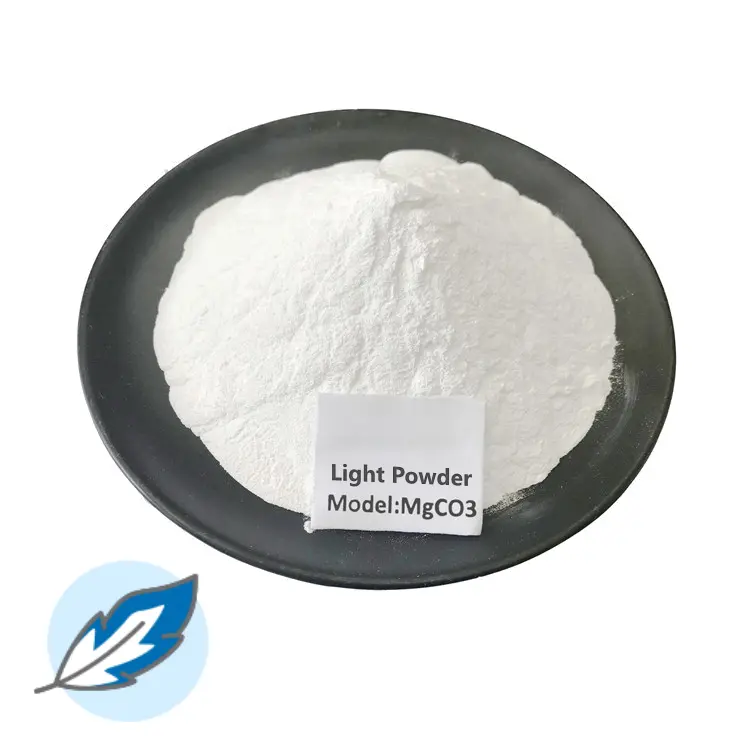In recent years, inorganic compound filler has been widely used in the preparation of flame retardant polymer materials, the use of more common aluminum hydroxide and magnesium hydroxide. However, along with the continuous development of light magnesium carbonate manufacturing and selling scale of operation, light magnesium carbonate is also more and more used as filling material, in vulcanized rubber as reinforcing agent, filler, can be used as heat insulation, heat-resistant fireproof material.
Light magnesium carbonate, also known as basic magnesium carbonate, is white monoclinic crystals or amorphous powder, non-toxic, odorless. Light magnesium carbonate as a new type of filler, lighter than the general inorganic filler, in addition, when the polymer material in the incineration, light magnesium carbonate can not only release the crystalline water, transformed into an oxide barrier layer, but also release carbon dioxide gas, plays a role in dilution of flammable gases, so it can be fire resistant flame retardant.
In the processing industry of inorganic materials as fillers, the biggest problem faced is that the polarity of the surface of inorganic materials is very strong, and the dispersion and compatibility in polymers is not ideal, so the modification of light magnesium carbonate is very necessary. Stearic acid is a kind of cheap organic acid, there are hydrophilic and hydrophobic groups similar to coupling agent, the terminal carboxyl group can have a chemical reaction with the polar groups on the surface of light magnesium carbonate, so as to make the surface of the inorganic material coated with a layer of lipophilic groups, and the dispersion and compatibility of modified inorganic material inside the polymer organics will be greatly improved.
The modification of light magnesium carbonate by using stearic acid is mainly to study the influence of the amount of stearic acid, reaction temperature and reaction time on the modification effect, and the optimal modification conditions can be finally determined through experiments. The settling volume, oil absorption value and activation degree of the modified light magnesium carbonate were determined and characterized by infrared spectroscopy and heat loss. After the modification, the hydrophilic surface of MgLCC was changed to lipophilic surface; the stearic acid and MgLCC were not simply physically adsorbed but chemically reacted to form a new chemical bond. It shows that it is not simply adsorbed on the surface of MgLCC, but has chemical interaction with the polar groups on the surface of MgLCC, and is firmly grafted on the surface of MgLCC in the form of chemical bond.

